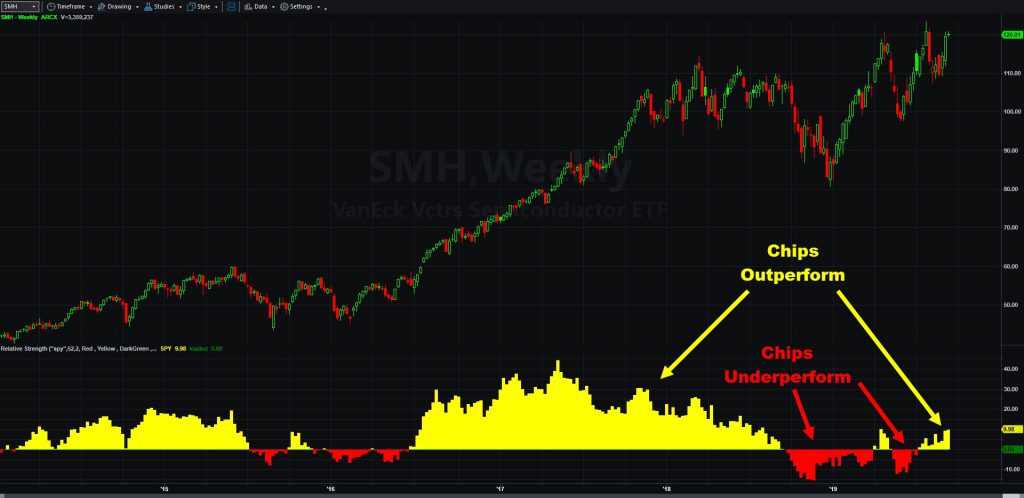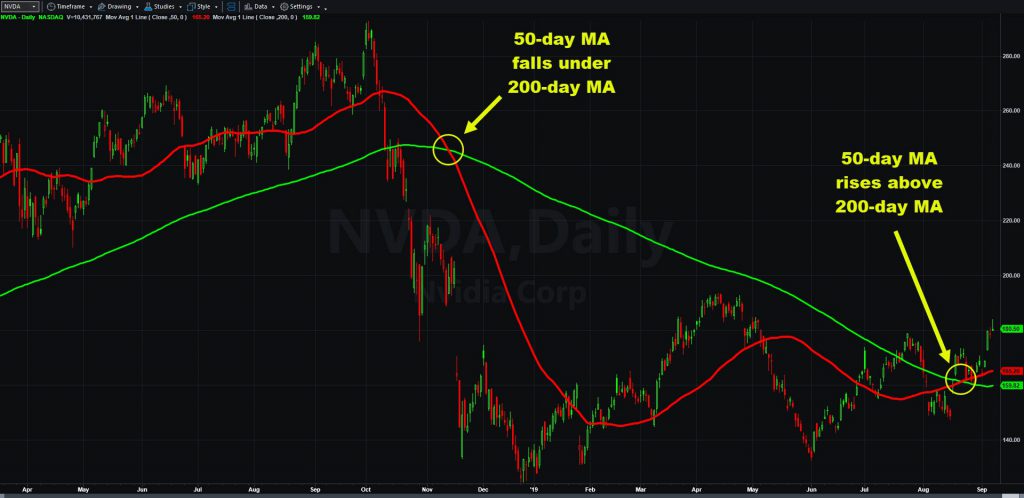Chip stocks are pushing old highs as investors seem to expect better news for one of the market’s most traded industries.
The Market Vectors Semiconductor ETF (SMH) closed 2 percent below its all-time high yesterday. It’s also up 5.8 percent in the last month, more than triple the gain of the broader S&P 500 over the same period.
The biggest catalyst for the rally is optimism about a trade deal between the U.S. and China. That’s been especially true since August 29, when Beijing said it preferred a “calm attitude” toward President Trump rather than hiking tariffs.
SMH’s 52-week relative strength indicator also broke above the zero line in early July. It even stayed there as volatility spiked in August, a sign of money flowing into the sector relative to the broader market.

Nvidia’s Golden Cross
Chip-equipment companies like Teradyne (TER) and Lam Research (LRCX) have been among the top performers in the last six months. They’ve appreciated 2-3 times more than SMH.
An interesting chart pattern has also appeared in Nvidia (NVDA), a one-time hedge-fund favorite that’s still popular with TradeStation customers. Did you know NVDA’s 50-day moving average just rose above its 200-day moving average in late August?
That’s often considered a bullish “Golden Cross,” potentially signalling an upward change in direction. Technicians may view it as a signal of NVDA turning more bullish after 11 months of weakness.
Another semiconductor-related name outside SMH, Western Digital (WDC), has also been moving. It’s up about 10 percent in the last week as industry watchers look for higher memory-chip prices.

Rotation Within Tech
Strength in semiconductors seems to be coming at the expense of other tech stocks — especially software makers. There are a few possible reasons for this.
First, investors viewed software stocks as mostly “China proof” with little tariff risk. That makes them potentially less appealing now that Beijing and the U.S. could be moving toward a trade deal.
Second, software makers have higher valuations than chips. Microsoft (MSFT), for instance, has a price/earnings ratio of about 27 and a price/sales ratio of about 8. Compare that with 12 and 3, respectively, for Intel (INTC).
Higher-multiple stocks generally do better when interest rates are low. But money managers are less willing to pay those higher prices when they start rising. Chip stocks, compared with more expensive software names, may look like bargain.
Finally, you have events like Apple’s (AAPL) iPhone launch at 1 p.m. ET today. Names like Skyworks Solutions (SWKS) and Qorvo (QRVO) often move in conjunction with AAPL because they’re big component providers.
In conclusion, chip stocks continue to show a positive change of character following weakness in 2018. Given their importance in the global economy and longer-term hopes about 5G networking, investors may want to keep watching this corner of tech.






















